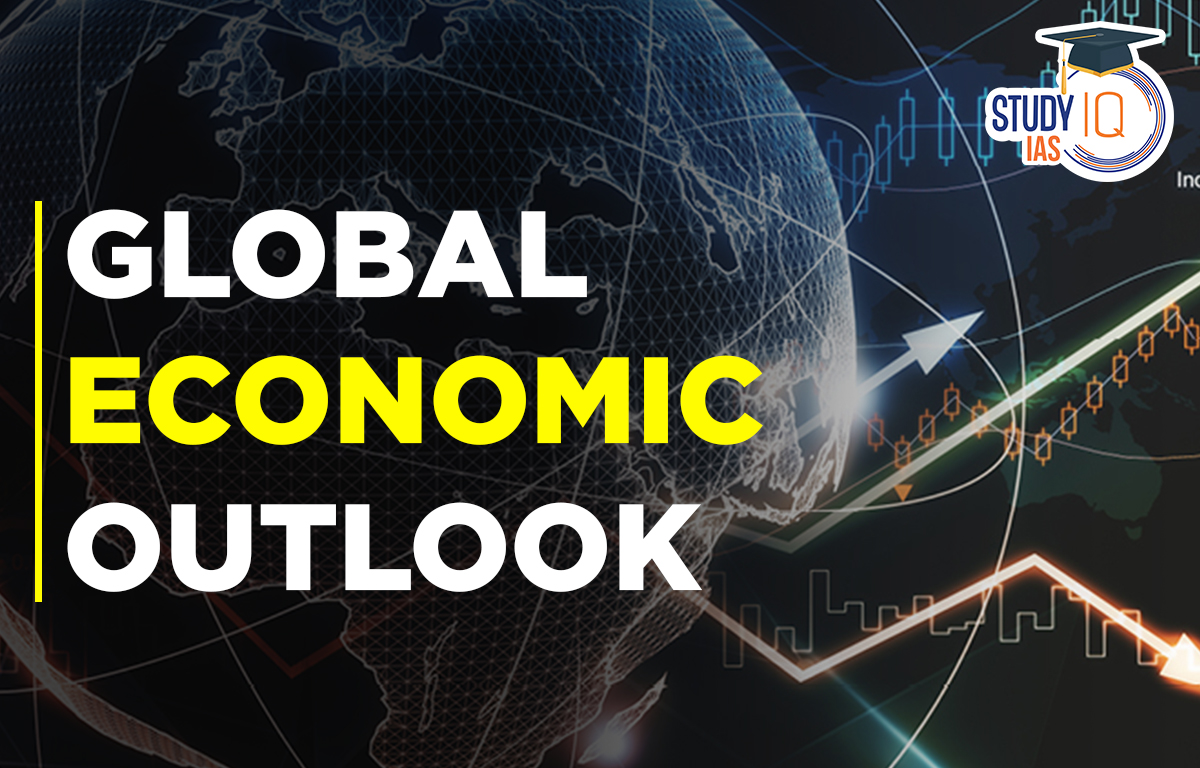Table of Contents
Context: In its January update of the World Economic Outlook (WEO) report, the IMF has marginally improved the forecast for global growth in 2023.
About World Economic Outlook (WEO)
- It is a bi-annual publication by the International Monetary Fund (IMF) that provides analysis and forecasts of the global economic situation and prospects.
- The report typically includes a global outlook, as well as regional and country-specific analyses, and provides insights into key economic and financial trends, risks, and policy challenges facing the world economy.
- The IMF releases the WEO twice every year, in April and October, apart from updating it twice — in January and July.
Key takeaways from the WEO’s January 2023 update
- Global growth: According to the IMF’s October 2022 WEO, the global growth rate will decelerate from 3.4% in 2022 to 2.7% in 2023, resulting in a recession for many people in 2023.
- However, in the January update, the IMF effectively rules out a global recession.
- Global growth is now projected to fall to 2.9% in 2023 before rising to 3.1% in 2024.
- Significant revisions: China, Russia, the US, Germany, and Italy are some of the key economies that have seen the most significant upward revisions in their 2023 GDP forecasts.
- The United Kingdom saw a substantial (almost 1 percentage point) downgrade in its 2023 GDP.
- Global inflation: Global inflation is set to fall from 8.8% in 2022 to 6.6% in 2023 and 4.3% in 2024, stated the IMF. Price rise is slowing for two main reasons:
- One, monetary tightening all across the world — higher interest rates drag down overall demand for goods and services, which in turn slows down inflation.
- Two, in the wake of a faltering demand, prices of different commodities — both fuel and non-fuel — have come down from their recent highs.
- In 2023, advanced economies are expected to have an inflation of 4.6% while emerging economies will continue to face an inflation of 8.1%.
- Indian Scenario: There’s been no change in India’s growth outlook since October 2022.
- India will stay the world’s fastest growing major economy in 2023 and 2024.
- Growth in India is set to decline from 6.8% in 2022 to 6.1% in 2023 before picking up to 6.8% in 2024, with resilient domestic demand despite external headwinds, states the IMF
What is Recession?
- A recession is a period of economic decline characterized by a decrease in GDP, employment, and trade lasting typically two consecutive quarters or more.
- Recessions can have a significant impact on individuals and businesses, and can lead to a decline in consumer spending, lower investment, and reduced economic growth.
The International Monetary Fund (IMF)
- About: IMF is a specialized agency of the United Nations to foster global monetary cooperation, secure financial stability, facilitate international trade, promote high employment and sustainable economic growth, and reduce poverty around the world.
- Headquarters: Washington D.C.
- Establishment: The IMF was established through the Bretton Woods Conference 1944 in the aftermath of the Great Depression of the 1930s.
- Membership:
- Currently, the IMF has 190 member countries.
- India was among the 44 founding member countries of IMF.
- Any other state, whether or not a member of the UN, may become a member of the IMF in accordance with IMF Articles of Agreement and terms prescribed by the Board of Governors.
- Membership in the IMF is a prerequisite to membership in the IBRD.
- Pay a quota subscription:
- On joining the IMF, each member country contributes a certain sum of money, called a quota subscription, which is based on the country’s wealth and economic performance.
- Quotas are denominated (expressed) in SDRs (Special Drawing Rights).
- Members’ voting power is related directly to their quotas.
- Special Drawing Rights (SDRs):
- The SDR is an international reserve asset, created by the IMF in 1969 to supplement its member countries’ official reserves.
- SDR is the IMF’s unit of account and not a currency.
- The currency value of the SDR is determined by summing the values in U.S. dollars, based on market exchange rates, of a SDR basket of currencies.
- SDR basket of currencies includes the U.S. dollar, Euro, Japanese yen, pound sterling and the Chinese renminbi (included in 2016).
- The SDR basket is reviewed every five years.
- SDRs represent a claim to currency held by IMF member countries for which they may be exchanged.
- Important publications:
- The World Economic Outlook
- The Global Financial Stability Report


 Daily Quiz 17 April 2025
Daily Quiz 17 April 2025
 Nilgiri Biosphere Reserve, Map, Climate,...
Nilgiri Biosphere Reserve, Map, Climate,...
 Complete List of Indian State Animals
Complete List of Indian State Animals





















